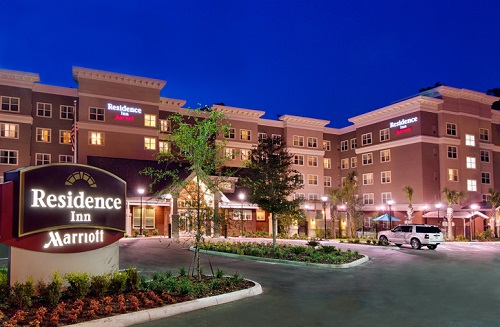✕

Column: industry Tag: green hotel Published: 2017-04-25 11:09 Source: Author:

Developing a hotel is a complicated process all in its own, but some development companies have taken it a step further by building hotels on Environmental Protection Agency-certified brownfields, which are pieces of land that have contaminated soils.
According to the EPA’s website, some brownfield projects can receive grant funding, such as assessment grants, revolving loan fund grants, cleanup grants and area-wide planning grants from the EPA.
Over the years, several hotels have been built through brownfield cleanup projects, and some have received funding at the state and local level. These projects include: The Skirvin Hilton Hotel in Oklahoma City, Oklahoma, which received a grant from the Brownfield Revolving Loan Fund; A Comfort Inn in Bay City, Michigan, which was granted $742,350 in local and school tax capture for the development of the hotel, approved by the Bay City Brownfield Redevelopment Authority; and The Mayo Hotel in Tulsa, Oklahoma, which was the first cleanup site in a brownfields program under the Oklahoma Corporations Commission.
Not all brownfield hotel development projects receive outside funding. Take, for example, the Residence Inn Gainesville I-75 in Gainesville, Florida, which opened in August 2009 and was built on a contaminated site designated as a brownfield.
Bruce Collins, director of development at OTO Development, the company that developed the hotel, said the land owner paid for all of the brownfield cleanup work, and no outside funding was provided to build the hotel.
He added that the process was made easier by clear county protocols. Alachua County, where the property is located, established remediation protocol based on soil test results, and required that disturbed dirt be properly mitigated while remaining soil measuring below established limits be capped with asphalt.
“We simply followed and documented the process provided by Alachua County,” he said.
The Residence Inn Gainesville I-75 in Gainesville, Florida, was built on a brownfield. The hotel opened in 2009. (Photo: OTO Development)
Challenges
Still, the project faced challenges that usually aren’t present when developing on a clean piece of land.
“Prior use of the property—as a thermometer manufacturing facility and an automotive repair facility—contributed to its designation as a brownfield,” Collins said. “When contaminated soils are discovered and must be disturbed, the local environmental agency is tasked with establishing the specific procedures for disposal. You cannot simply take the dirt away for someone to use elsewhere; it must be disposed of at a regulated facility that can mitigate the contamination.”
Despite that, the Gainesville project was simpler than some brownfield projects are, Collins said.
Factors such as contamination location within a site, and the type and level of contaminants, can sometimes complicate the process of restoring and reusing a piece of land. But OTO Development avoided those types of issues by being “conscious of our design,” Collins said. “For example, we kept the building and all the underground storm water system on the north end of the site.”
A truly green hotel
From the ground-up building process to how the hotel operates today, The Residence Inn Gainesville I-75 is a sustainable hotel.
Waste from demolition and construction were recycled, the framing structure was built from 90% post-consumer recycled steel, and the hotel has energy-efficient windows throughout, according to Collins. The property also has certification from the Florida Green Lodging Program and the American Hotel & Lodging Association/AAA EcoRooms & EcoSuites program.
Previous:China Hotels Growth Expected to Slow
Next:Economy and midscale revenue management takes finesse
Hot key words
Hot Products
Popular Vendors